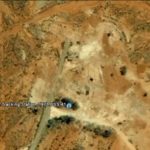
Remains of Island Lagoon Tracking Station
In the early 1960s, I worked at the Island Lagoon Satellite Tracking Station at the Woomera Rocket Range, a large Australian Defence Force aerospace set up as a series of individual satellite stations, each of which was located more than the blast distance of the then known bombs from each other, so that any attack could only take out one at a time. This was an understandable and sensible security precaution at the time but for staff it lent itself to hours of travel over empty and dusty red gibber plains if you wanted to move between stations. No doubt it would have been more ‘efficient’ to aggregate the stations, that is it would have been cheaper in both capital and labour costs, but from the perspective of security, this was the more ‘effective’ solution.
Hamburgers and Blackouts (April 24), considered how, in the past, we strove to enlarge and integrate our electricity infrastructure and infrastructure networks in the name of efficiency, but how this has placed us at risk. New technology now provides more options. Which brings us to microgrids.
A Microgrid is a localized group of electricity sources and loads that may operate connected to and synchronous with either the traditional centralised electrical grid or with other microgrids but may equally function autonomously as physical, security or economic conditions dictate. Microgrids enable a focus on both physical and cyber security for military facilities and assure reliable power without relying on the macrogrid but they also have commercial applications. There are many manufacturing processes in which an interruption of the power supply may cause high revenue losses and long start-up time and last year a NSW farmer was reported to have withdrawn from the grid and now uses only solar power with backup to support his electric cattle fences because the macrogrid failed to provide him the continuity he needed. In South Australia the Fluid Solar House at Elizabeth is a 4 storey building with office and research facilities that is completely off-grid using a water-based heating and cooling system incorporated in the building’s ceilings and floors at less than half the cost of a commercial air-conditioning plant. Low cost housing is now being built using the same technology.
With new options comes the necessity to re-think old solutions – but also old objectives. Efficiency might have once been our touchstone. Should it be so now?

Recent Comments